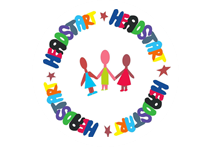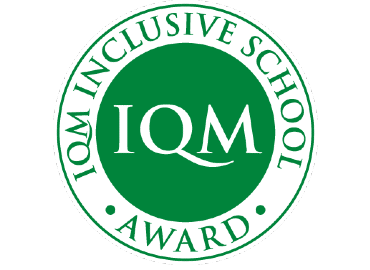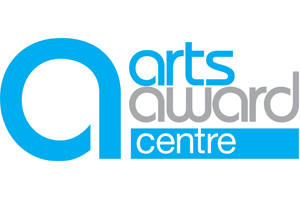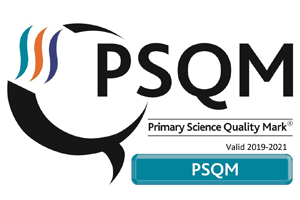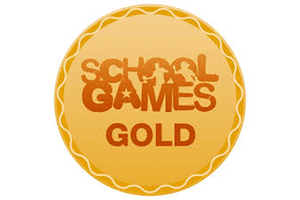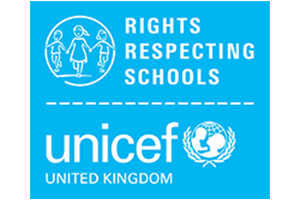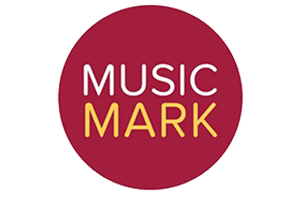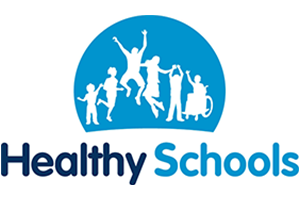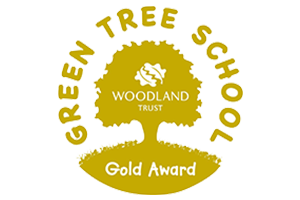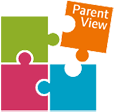Phonics
Phonics Page
Curriculum Intent
As a whole school, we are committed to using the Sounds-Write (linguistic phonics) approach to assist the children from Reception to Year 6 to learn to read, write and spell independently with accuracy, understanding and confidence.
Curriculum Implementation
In Nursery and Pre-school phonics is taught through listening games and oral segmenting and blending. Formal teaching of letter symbols and sound correspondence is not taught until Reception, however the use of listening games and activities from Phase 1 of Letters and Sounds should be used throughout school as needed.
Sounds Write is a Sensory-Motor approach to teaching reading and spelling. It requires:
· Visual discrimination of letter shapes
· Auditory discrimination of the sounds in speech (we always say the sound as we write it)
· Integration of auditory and visual skills (Sounds match to spellings, spellings match to sounds).
The Sounds-Write approach ensures that:
Children develop key concepts about the way English is written.
Children practise the skills essential for reading and spelling accurately.
Children learn the sounds and the spellings of English.
Concepts
Through the sounds-Write programme children will understand that;
Concept 1
Letters represent sounds
NB: Letters do not ‘make’ sounds they represent them and, as teachers and learning support assistants, we should be careful that, when we are teaching children to read,
we use appropriate phrases to reinforce this e.g. ‘what sound do you say for this?’ (Pointing to letter or letters) not ‘what sound does this letter make?’
Concept 2
A sound can be spelled with 1,2,3 or 4 letters.
The English language contains single letter spellings. For example, in the word ‘cat’ c-a-t. These are relatively simple to read and spell. However, many sounds are spelled with two or more letters e.g. oa in boat, ou in out and igh in high. These present more of a problem for a non-skilled reader and will need to be pointed out by the teacher and practised by the child.
It is important to understand that letters don’t make sounds, they represent or spell them.
Concept 3
In English the same sound is often written with different spellings (same sound, different spellings).
In English every sounds that we say can be represented by at least 2 different spellings. In many cases the number of different spellings of the same sound is much larger; maybe 8 or 9! The sound ‘s’ for example is written in different ways in these words:
Sat, city, voice, mess, house, listen, scent.
There are 44 speech sounds and around 175 different ways to spell those sounds, using a combination of the 26 alphabetic letters.
New readers must learn that there are more ways than one to represent the same sound so that they learn to look very carefully in order to spell well.
Concept 4
In English, the same spelling can spell different sounds
For example, <o> spells the sound /o/ in dog, /oe/ in go and /oo/ in do. Readers need to be able to swap sounds (phoneme manipulation) to read the word accurately if another possible sound for that spelling has been tried first.
Skills
1. Blending
Because words are composed of sounds, in order to read we need to be able to blend sounds together and at the end ‘hear’ a meaningful word. Daily practise in the Sounds-Write lessons will develop good blending.
2. Segmenting
Because the English written language is a sound > spelling code it is important that children are taught to segment the sounds in words so they can read and spell with ease. Through segmenting children have the opportunity to notice the ways in which the individual sounds are spelled.
3. Phoneme Manipulation
Skilled readers are able to add, change or omit sounds in words and understand how this manipulation of sounds makes new words. This skill of phoneme manipulation is essential so that a new reader can swap sounds around to deal with same spelling-different sound.
Code Knowledge
For skilled fluent reading it is vital that children have a thorough knowledge of the spelling code of the 44 sounds of English.
The code is taught through multi-sensory activities and lessons where the children are building whole words sound by sound, reading words and writing words.
Initially we work with words where the spellings are 1:1 (sound:letter).
Later we move to 2 letter spellings and we teach the spelling alternatives for the sounds. In each school year, we extend the number of sounds taught and also the number of spellings covered.
(The order of teaching the sounds and spellings are included in the appendix.)
Children need to be taught explicitly and extensively how the sounds of English are written. This teaching and learning should be repeatedly revised and reinforced during daily reading and spelling activities. The code should not be allowed to remain a mystery to pupils.
The Sounds-Write (linguistic phonics) programme is based on extensive research which has isolated and examined the processes involved in learning to read and spell. Each component of the programme is carefully designed so that the developing reader/writer can be guided by explicit instruction at every critical point.
Through whole class instruction, extension activities, small group practice all children in our school will be equipped with the necessary concepts, skills and knowledge to become independent in reading, writing and spelling.
As with all tasks some children will learn quicker and some will need extra practice and teaching. Each child’s progress will be commensurate with their level of ability.
Reception
1st Term
Initial Code (Sounds-Write Units 1-7)
Introduce an average of two ‘new’ sounds per week always in the context of word building (i.e. sound to letter) and practised through reading, writing sound swopping, symbol search activities etc. By Christmas, pupils will understand that two letters can spell one sound (e.g. bell, boss, buzz) and be able to read and spell words containing sounds from Units 1-7.
2nd Term
Initial Code (Sounds-Write Units 8 – 11)
Children will be able to read and spell words containing adjacent consonants (four and five sounds). No new sounds/spellings will be introduced at this stage.
By Easter (or shortly after), children will have completed Unit 11 (sh, ch, th, ck, wh, ng, qu)
3rd Term
Bridging Lessons into the Extended Code using lesson 6, 7 & 8
Sound /f/ spellings < f ff >
Sound /k/ spellings < c k ck q >
Sound /l/ spellings < l ll le >
Sound /c/ spellings < ch tch >
Sound /s/ spellings < s ss >
Through the teaching in these lessons children will come to understand that the same sound can be spelled in different ways.
Year 1 (Unit 1-26 of the extended code)
Extended Code Lessons
Unit 1 – /ay/- first spellings
Unit 2 – /ee/– first spellings
Unit 3 – <ea> same spelling – different sound
Unit 4 – /oe/ first spellings
Unit 5 – <o> same spelling – different sound
Unit 6 – ‘er’- first spellings
Unit 7 /e/ spellings
Continue teaching the concepts, skills and knowledge using S-W Extended Code Lessons 1-10 taking 1-2 weeks per phoneme unit using S-W Lessons 6, 7, 8 & 9 and doing Lesson 10 for the grapheme units regularly, throughout the year.
By doing S-W Lesson 10, children will understand that the same spelling in English can represent different sounds.
The term ‘first spellings’ refers to a limited number of the common ways to spell a sound.
By unit 4 in the Extended Code, children will also begin the work on reading and spelling words of more than one syllable (polysyllabic words). They will start with 2 syllable words and progress to 3 and even 4 syllable words for reading and writing. Sounds-Write Lessons 11, 12 and 13 & 14 will be used and Lesson 15 to analyse the spelling of polysyllabic words.
Years 2,3 & 4 (from unit 27 of the extended code)
We will continue to teach and revise the sounds and spellings of the Extended Code progressing through the Sounds-Write Units. In many cases we will revisit a sound and cover ‘more spellings’ (complete list of spellings for a sound).
Children will continue to practise reading and spelling polysyllabic words.
Curriculum Impact
The impact of our phonics work is monitored and evidenced by the Phonics subject leader and SLT in an annual Phonics Portfolio.
Information about our Phonics scheme– Sounds-Write
Sounds-Write is a highly structured, cumulative, sequential, explicit and code-oriented instructional programme for teaching all children to read and spell.
Sounds-Write provides the classroom practitioner with rigorous training in how to teach reading and spelling from the moment children begin their schooling in the Foundation Stage, throughout Key Stage 1 and into Key Stage 2. In addition, the programme also provides a highly successful intervention for supporting children with special needs.
Sounds-Write:
o Provides clearly structured, lesson plans
o is developmentally appropriate for beginning readers
o offers fast and highly effective intervention for children at all levels who have fallen behind in their reading and spelling
o is a real phonic programme that teaches in simple steps how the sounds of the language are represented by the writing system
o places emphasis on giving practice that is grounded in physical, concrete experience of the ideas and conceptual understanding the pupils need to assimilate
o teaches the three essential skills of segmenting, blending and phoneme manipulation necessary for reading and spelling throughout the programme on a daily basis until all pupils achieve the automaticity that underlies the fluency of every successful reader.
Children are encouraged to take decodable books and library books home to read to and with parents.
We have invested heavily in training and all staff have been trained in the Sounds Write approach. We continue to invest through support days for staff to ensure that we have a highly skilled staff team and a consistent approach across school. Sounds Write information for parents.






